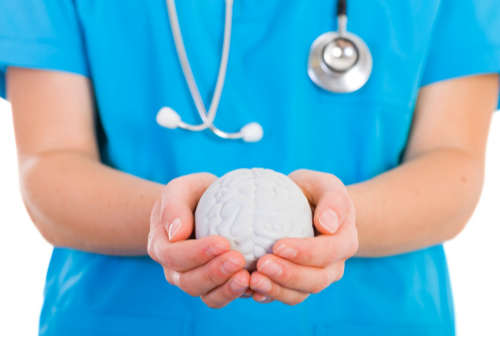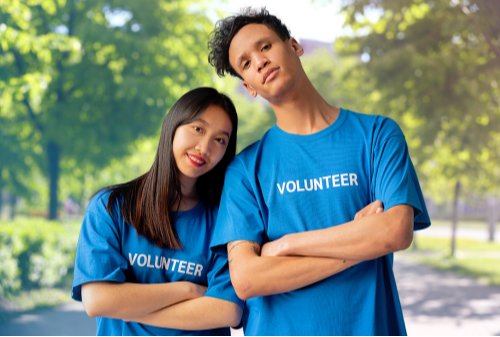The prestigious journal Harvard Crimson has just published the 2024 Harvard Medical School application essays! These three new essays are exceptionally well-written and are a must-read for parents. They offer valuable insights, not only on essay writing but also on the types of social activities students should engage in and how to align personal interests with their chosen majors.
The essays' structure and style are exemplary, making them an excellent reference for aspiring applicants. We will be sharing the essays on this blog, along with an in-depth analysis for each
Successful Harvard Medical School Essays 2024 with Analysis from College Admissions Counselor
By integrating skills I have gained from conducting translational neuroscience and organic chemistry research, caring for people with Alzheimer’s disease (AD), and studying the brain on molecular, cellular, and systems levels, I want to help alleviate one of society’s most burdensome and significant issues: mental illness.

My interest in the brain started in high school when I had the opportunity to investigate the neural correlates of music performance with electroencephalography (EEG) in Scott Makeig’s computational neuroscience lab at UCSD. An avid musician, I was fascinated by how the brain could represent complex behaviors such as emotional perception of music. This fascination with neural processing eventually pushed me to pursue neurobiology at Harvard.
My freshman year I saw a flier calling for student volunteers to work with people with AD. Interested in neurology, I saw this as a perfect opportunity to learn more about brain pathophysiology. Every week I would go to the nursing home to meet my resident— talking, performing music, or even playing crochet. I learned a lot about caring for people with dementia, experiencing firsthand how simple actions such as communicating with facial expressions and touch, and being flexible in conversations, made a big difference. As I learned these lessons, however, my assigned resident also became my friend. I found myself practicing piano pieces for the first time in years to play for her. Being recognized, a simple action many of us take for granted, became a highlight of my day. When I attended lectures about AD, I no longer visualized patients without faces, but instead saw my friend. She brought personal relevance to my previously abstract academic world, and I began to see medicine as a future vocation.
I wanted to learn more about the interface of academics and medicine and looked for ways to study the mechanisms of the brain in a clinical context. I found such an opportunity in Diego Pizzagalli’s translational neuroscience lab at McLean Hospital, where I utilized EEG to study clinical depression. In the process, I gained direct insight on the current state of psychiatric research, the clinical research environment, and how to think critically about unsolved problems. More importantly, by applying my research skills and neurobiology coursework in a clinical context, I experienced firsthand how my passion for academic learning and intellectual curiosity could directly fuel a career in medicine.
In order to better understand clinical practice, I contacted physicians at Salinas Valley Memorial Healthcare System and Massachusetts General Hospital where I shadowed neurologists and cardiologists. I observed regular check-ups, emergency room procedures, surgeries, and the differences between private clinic and hospital environments. The most memorable aspects, however, were the raw vulnerabilities patients revealed. I saw a wife emotionally leave her husband before heart surgery and watched a surgeon complete the procedure. I listened to a distressed couple discuss options for their disabled child because home care was too demanding and met a woman frustrated by her recent aphasia. The thought that I might be able to respond to these vulnerabilities as a practicing physician was powerful.
In my sophomore year, I attended a lecture titled “Resuscitating Psychiatric Drug Discovery” by Dr. Steven Hyman, former Director of the National Institute of Mental Health. Anticipating hearing about exciting developments from the head of psychiatric research at the Broad Institute, I was surprised to hear him instead state that there have been no new mechanisms in psychiatric drug development since the 1950s. Aspiring to enter psychiatry, I was frustrated but thought of ways to train myself to address this pressing need. One of his main points was that drugs bind to brain receptors and interact with catalytic enzymes, yet there is little emphasis placed on the catalysis involved in prescribed drugs. To develop this mechanistic intuition and deepen my understanding of catalytic chemistry, I joined Eric Jacobsen’s organic chemistry lab where I have been working to design and discover small-molecule catalyst systems for the ester hydrolysis reaction. Designing, synthesizing, and screening catalysts parallels much of the drug discovery process, and I hope to be able to apply these skills in the future to psychiatric drug development.
I am committed to pursuing a career in medicine. My coursework has prepared me to approach medicine with perspectives from psychology to organic chemistry, and caring for nursing home residents with Alzheimer’s disease has given me intimate familiarity with patient care. Shadowing has taught me the physician’s perspective, and clinical research has shown me how to mediate collaboration between medicine and academia. In medical school, I look forward to exploring how I can integrate my skill sets to best respond to patient vulnerabilities. Although I am most interested in mental health-related fields, I am eager to explore different fields of medicine and to broaden my knowledge in both the lab and the clinic. By doing so, I hope to learn how to maximize my contribution to medicine and my impact on future patients.
The successful Harvard Medical School essays of 2024 provide a wealth of insights into crafting a compelling narrative. These essays highlight the importance of authenticity, creativity, and personal reflection in making a memorable impression. Applicants can learn to focus on their unique journeys, articulate their passions clearly, and illustrate their resilience and empathy. By carefully reflecting on their experiences and presenting them in a cohesive and engaging manner, students can craft essays that resonate deeply with admissions committees and effectively convey their true selves.
This article is highly impactful. It vividly portrays students' motivations for pursuing a career in medicine, how they cultivate their interest, and the actions they take to sustain it. What stands out is the author’s profound compassion and empathy, exemplified by the words, "I no longer imagine faceless patients, but see my friends." These heartfelt expressions bring to life a candidate who is deeply engaged in social participation and possesses strong academic enthusiasm.
It is crucial for application essays to convey a student's passion for their chosen field. This passion, seamlessly woven into the author's personal experiences, is genuine and hard to fabricate. Therefore, as students actively engage in extracurricular activities and community service, they should thoughtfully reflect on these questions: What did I gain from this activity? Does it highlight my uniqueness and interests? Pondering these questions can elevate both essays and activities to a higher level.
In comparison to the other two essays, this one excels in its writing structure and the narrative of relevant experiences. I highly recommend reading this article multiple times for a deeper understanding and inspiration.
Jim and I had only spoken once by phone and were now in a soundproof piano practice room in my dorm basement, after dark and out of cell phone range. My new piano student told me he lived in a sober house, was unemployed, and “had time to kill.” He wanted to learn piano and called me because he read favorable online reviews of my piano playing.

I was somewhat flattered but mostly uneasy about what I was getting myself into. I have played jazz piano since age 11. My early focus was technique. I loved practicing and spent hours at the piano. Through Boston’s Berklee School of Music summer programs, I gained a solid foundation and connected with exceptional musicians. I led multiple ensembles in school and professional circles. At first, I played wherever I could, including non-paying venues, but as my music further matured, I performed at increasingly high-visibility settings. I particularly treasured playing for charitable causes such as Ronald McDonald House, Gift of Life bone marrow drive, and at Boston Children’s Hospital. During college, I taught jazz piano, helping my students navigate the complexity and nuance of jazz theory. In the last several years, a highlight of each week was playing solo jazz in Yale’s cancer center lobby.
Although I could not help patients from the medical perspective, I felt that I made a small contribution when an improvisation on “Somewhere Over the Rainbow” would bring a smile to a patient’s face. To me, there are striking parallels between jazz and medicine. Jazz improvisation encourages freedom of expression and creativity within the confines of a musical structure that is unspoken but understood among performers. Medical practice emphasizes customization of care based on a patient’s unique circumstance within the boundaries of established care paths and standards. In jazz, musicians take turns at improvisation, while the rest of the band “comps” (jazz lingo for “accompanies”). A fine soloist leads without overshadowing. Effective comping highlights the soloist without drawing excessive attention. Jazz, dynamic and fluid, requires teamwork and the ability to listen. I believe jazz prepared me well for the seamless teamwork and collaboration, learning, and adaptability that are intrinsic to medicine. At Yale, I was drawn to Molecular Biophysics and Biochemistry for its scientific rigors and biological applications. A major focus of my work has been laboratory research. Under the guidance of my mentor Dr. Keith Choate, a brilliant physician scientist on the Yale faculty, I identified and studied the function of a palmitoyl transferase gene responsible for a cutaneous inflammatory disorder called erythrokeratoderma variabilis. I also observed Dr. Choate in the pediatric dermatology clinic at Yale New Haven Hospital. I vividly recall a young girl with brown scaly plaques covering almost her entire arm, her tearful efforts at hiding her arm as if she felt shameful, and her mother wringing her hands in anguish.
The medical team approached the girl gently, trying to put her at ease. When Dr. Choate mentioned the potential of genomic-driven medicine offering new therapies, her mother’s eyes lit up, even though the solution was not yet at hand. I had been fascinated with the gene from the molecular angle, but seeing firsthand the physical and emotional tolls from the disease strengthened my interest in developing “post-genomic” technologies. At the same time, moments like this remind me why I want to be a doctor. No doubt biomedical research is stimulating and rewarding, and I hope to continue research pursuits. But I want to work directly with patients and personally make a difference in their lives. While it is possible to make a difference through research, I find it particularly meaningful to contribute at the human-to-human level. My aspiration is to learn about the human body and its diseases and impart my knowledge and skills to patients to relieve suffering. Medicine is going through significant changes. There is hope that technologies such as high-resolution genomics may identify more biomarkers for disease diagnosis, prognosis, and therapeutic guidance. Refinements in DNA sequence technology and computational tools already allow higher and higher throughput at lower cost. Application of genetic analytics on a population scale will hopefully help make personalized medicine a reality. Healthcare delivery is also going through a redesign, with increased emphasis on value and teamwork.
I look forward to entering medicine at such an exciting time and feel well equipped from my training in molecular biology, computer programming, bioinformatics, and jazz to make a meaningful impact. After months of piano lessons, Jim played an awesome improvisation of “Mary Had a Little Lamb.” We had become friends and shared animated dialogues about art, religion, love, biology, and of course music. Jim was delighted that I also enjoyed rap, his favorite genre. I saw a transformation from aimless addict to proud-yet fragile young man. And then . . . he got a job! Jim was gainfully employed. He told me I was his inspiration. Little did he know that through the opportunity to teach him, grow with him, and observe his remarkable transition, I was in fact inspired by him.
This article stands out for its unique approach. The author introduces a passion for jazz, skillfully linking it to medicine, creating a seamless narrative of coherent interests. His experience playing music at children's hospitals and cancer centers offers an inspiring example for students interested in the arts on how to creatively integrate their hobbies with their application goals.
The author draws a compelling parallel between the teamwork in jazz and in medicine: “In jazz, musicians take turns improvising while the rest of the band accompanies. A good soloist leads without overshadowing, and effective accompaniment highlights the soloist without being overly noticeable. Jazz is dynamic and fluid, requiring teamwork and listening skills. I believe jazz has laid an excellent foundation for my seamless teamwork, learning, and adaptability in medicine.” This connection powerfully conveys to admissions officers that his teamwork skills in jazz are directly transferable to the field of medicine.
Moreover, the article emphasizes the author's social impact. He recounts helping Jim, a former drug addict, find purpose and secure a job, highlighting the profound influence he had on Jim's life. This narrative of social influence not only showcases the author's commitment to community service but also illustrates his ability to inspire and create meaningful change.
A home on fire for the red of my lips; the golden tassel for the sparkle in my eye—who am I, but a mosaic of my experiences? It seems that with every tick of the clock, each breath, and every blink of the eye, a splotch of color is added. Chaos?—Perhaps; the keen eye, however, sees art in the works, a continuous story—a human being.

My own chaos begins in a place of colors and sensations, of ardor and intensity—the Dominican Republic. Between the crowds of warm, bronze skin we boarded and sat in the faded navy-blue cloth seats. The bright sun glinted across the vast Caribbean Sea, and my little island disappeared amidst the never-ending blue. I agreed with the setting. Blue is how I felt. I shut the window, but the sun peeked in, bright and happy. Blue and yellow. That is what I would come to know—dreams and sacrifice all wound up. Initially, the transition was tough—we were the cool Caribbean colors lost in a sea of pinstriped professionals. I watched my parents struggle through years of low-paying jobs. Despite the pain of sixty-hour weeks, three bright white smiles always fueled the fire—my two brothers and I would be given opportunities my parents never had. My own passion began its manifestation when a young Hispanic doctor bestowed the gift of free health care to my younger brother, upon suffering third-degree burns; his benevolence left me in awe, admiration, curiosity, and amazement. A rainbow of wonders. Overnight, that red cross of medicine became my dream of helping others, of actualizing their hopes, and of spreading the favor that helped us. Within a few years, the blackness of fear and near death spilled across our canvas when my father suffered two strokes; nevertheless, the bright sun peeked through his window, and he pushed on. At that point, I more deeply began to realize what it was to have a dream—to endure two strokes and continue as a functional part of society seemed impossible, but proved conquerable to my father, who had a vision for his children. Seeing this, I too aspired.
Encouraged by my parents’ ardor and my passion for medicine, I began the execution of my own pursuit. Throughout high school, my desires for the future pushed me to extremes, and developed a side of me that I had never known. As I headed down that path of aspiration, the sun’s yellow transitioned into the gold that made up the various state awards I achieved for academic and artistic endeavors. I recall the anxiety at the award ceremony for the first state Latin forum that my high school had ever attended. I felt green-—could others see it? Months of preparation had brought me to this moment. My fingernails were still covered in paint. Finally, the judge announced that long yearned for award was indeed mine—First Place in the state.
Life at home, on the contrary, was not quite so glamorous and at the not-quite ripe age of sixteen, I took it upon myself to get my first job, of many to come, at Taco Bell. Four years of high school, thousands of tacos, and hundreds of late nights later, I graduated. Although the blue, yellow, red, pink, and green honors tassels clashed with the royal purple cap and gown, the happiness they brought was far from ignorable—I felt as if the clashing colors evinced the thrashes I surpassed in the process. To college I brought along the colors of experience that have driven me thus far, and pressed on. My dreams of becoming a doctor matured upon a trip to China and another to the island nations of St. Kitts and Nevis. As a result of both journeys, I hold a new understanding of what it means to be given opportunity. Although I surely never felt unloved or unwanted, throughout my youth I felt unfortunate. Miriam Beard once said that “Certainly, travel is more than the seeing of sights; it is a change that goes on, deep and permanent, in the ideas of living.” Never had I truly witnessed poverty, as I did in these countries; on the other hand, never had I discerned happiness under such different circumstances, as in St. Kitts and Nevis, or true respect and inner peace, as in China.
Upon returning from China, the fresh image of a toddler, shoeless and filthy with the dust and grime from the pollution in the air, haunted me. I wanted to make a difference. After much reading, my red cross took on a worldview when Doctors without Borders entered the picture. This time, my red passion mixed with the blue and the yellow of my Caribbean past for a deep purple of desire. Although I had no M.D. yet, I began volunteering at the Shepherd’s Hope clinic, inspired by my experiences abroad. This small clinic, founded solely on donations, provides free medical care to those who cannot afford it. As a Spanish to English interpreter working with immigrants, I am constantly reminded of my own background. At the now ripe age of twenty-one, I have experienced success, pain, happiness, loss, and more. Despite the splashes of unexpected pigment in my life, one thing has always been certain—my dream. I, of blue and yellow origins, will to add a Red Cross of health and altruism to my canvas, and to spread the colors of hope as far as the eye can see. My mosaic of tenacity is continually in the making.
This personal statement is exceptionally well-crafted, utilizing rich metaphors and vivid descriptions to convey the author's profound reflections on opportunity, the meaning of medicine, and life itself.
What resonates deeply is the narrative of growing up in a low-income family, facing significant hardships, yet maintaining a grateful heart and a strong desire to help others. While the author briefly mentions their volunteer experience in a clinic, the statement focuses more on the personal qualities of perseverance, empathy, and enthusiasm rather than detailing extensive medical experience. This approach makes the personal statement deeply moving and highlights the author's unique and compelling character traits. It is a captivating and memorable read.


